Before he died, Parson had left a touching eulogy to her, entitled ‘My Wife’s Character’.
She was lovely and amiable in her Person
Courteous and affable in her Behaviour
Lively and cheerful in conversation
Of a sweet and engaging temper
Of an open and ingenuous mind
In her Judgement of others candid
Zealous & sincere in the discharge of all conjugal duties
In the care of her children tender and affectionate
To her Servants kind & indulgent etc. etc.
It was written from the heart and he accepted its shortcomings. ‘This Character not being in Rhime,’ he wrote, ‘nor Poetical, & perhaps too long for the Present Taste, may be improper for an Epitaph; yet I choose to leave it, as a Testimony of my affection & love for, & the High Opinion I had of her. And I sincerely believe the whole to be strictly & fully true.’ 24
Tatton made no mention of his grandmother’s funeral in his diary, entries in which show that, outside working at the bank, he was becoming more and more tied up with his horses. ‘My brown mare foaled a Filly,’ he wrote on 26 March, and noted excitedly the details of its sire, Guido: ‘a bright bay Horse, full fifteen hands, one inch high with a deal of Bone, remarkably temperate and quiet to ride & leaps well; was bred by the Duke of Queensbury. Guido at four years old won the Revolution Stakes of 200 guineas each at Newmarket beating eight others … Guido twice beat the famous mare Dido.’ As the year wore on more foals were born, physick was administered on a regular basis, and in the summer months, when fashionable society was gathering in the spas, taking the waters and attending assemblies and balls, the only balls mentioned by Tatton were those of a medicinal nature, such as on 18 July, when he began his mare on a course of ‘Taplin’s Cordial Balls and a Mash Morning and Night’, or on 11 August when ‘my Mare had a Ball. I went and dined at Welton. My Mother, brother and Sisters were there. Returned at Night.’
All the while that Tatton was serving his apprenticeships, Mark, who was being groomed to inherit everything his father had created, remained at Oxford to round off his education. According to a letter written to Christopher in June, 1790 by his then tutor at Brasenose, the Revd George Harper, in which he spoke of Mark’s desire ‘to gain your esteem and confidence’, he came close to being a perfect student. He was attentive to lectures ‘during the whole of Lent & the first part of the Easter Terms’, mixed with a group of ‘respectable and ingenious men’, and could now, wrote Harper, ‘number among his intimate acquaintance some of the most valuable persons in this place’. However, what prevented him from giving ‘an absolute and unqualified approbation of his conduct’ was the fact that ‘there still remains on his mind a boyish improvidence …’ 25
The Revd Harper appears to have been somewhat naive in his approval of Mark’s set, for the one thing that they appear to have been most ingenious about was in parting their rich young friend from his money. Christopher was obliged to engage a new private tutor for Mark and to send them both into the country to study in a rented cottage. ‘I cannot conceive how he contrived to spend so much money in the University,’ wrote George Halme to his employer, on 30 September, 1790. ‘He did not appear extravagant when I was in College, but in Oxford, though one hardly expects it amongst Gentlemen, there are numbers ready to take advantage of generosity and inattention: a few of that description, I suspect, assisted him spending his money and his time.’ In the new situation in which Mark found himself, living in a country village, ‘his pocket expenses cannot be very great,’ Halme assured Christopher, ‘as there are no temptations to spend his time which is not spent in his own improvement’. 26
Mark managed to rein in his extravagance during the rest of his father’s lifetime and after he left Oxford he did everything he could to gain his approval. He became engaged to a local heiress, Henrietta Masterman, the only daughter of Henry Masterman of Settrington Hall, near Malton. Orphaned when she was only five years old, Henrietta was heir to the Settrington Estate, which included two houses: an Elizabethan manor house, enlarged about 1703, and a new rather austere neo-classical mansion, still partly under construction, which was intended to replace it. She was five years older than Mark, and, being a close neighbour, had known him for some time. She was well educated, spoke and wrote French, and wrote novels in her spare time. It was a love match and one the family warmly approved of. ‘I can assure you we are all extremely anxious to hear how you go on,’ his younger sister Decima wrote to him in June, 1795, ‘& I hope you will relieve us from our anxiety as soon as it is in your power.’
Decima, who was herself on the point of marrying a neighbour, John Robinson Foulis, the second son of Sir William Foulis of Ingleby Manor, York, was evidently alone at Sledmere with her parents, and the strain of sitting around for days on end with very little to do was beginning to show. ‘I long to see you again either married or unmarried ,’ she told him, ‘as at present we are left entirely to ourselves & as you know well to our devout conversations which are still very numerous . I have nothing more to say of any consequence & will only add the anxious wishes for your lasting happiness .’ 27 Mark and Henrietta were married on 11 November, in the church of Holy Trinity, Micklegate, York, where Henrietta had herself been baptised in October, 1766.
On the following day, 12 November, ‘the morrow of St Martin’, Mark, aged twenty-four, was nominated as High Sheriff of Yorkshire. It was a prestigious post and Christopher was so delighted that he agreed to pay for the considerable expenses that were involved. The cost of fitting out the sheriff and his retinue alone came to £355, which included £80 for horses, £35 for a coach, £19. 11 s . for a banner, £68. 18 s . to his tailor, £80. 18 s . for silks & velvets etc, £26. 18 s . for lace, £18. 18 s . to the shoemaker, £9. 12 s . to the hosier and £15. 12 s . for buckles. By the end of the year, the total costs had amounted to the huge sum of £1,077. 17 s . 6 d . 28
After the wedding Mark and Henrietta went to live at Settrington, and in September of the following year, as co-heir to his wife’s property, he adopted the name of Masterman to run before Sykes. Since Settrington was only ten miles from Sledmere, there was much toing and froing between the two houses. ‘Lady Sykes with Mrs Sedgewick, Miss Charlotte the lovely, & Mrs Crockay, your little Flirt, dined with us on Thursday,’ wrote Henrietta to Tatton, soon after her marriage. ‘Chr. also and Miss Crofts; & on Saturday she took her whole phalanx of Ladies, the above, Miss Langfords and my Sister to Heslerton.’ Henrietta seems to have struck up a particularly close relationship with Tatton, of all Mark’s siblings. ‘Fie on the lame Horse or the lazy Master, My dear Tatton,’ she wrote to him in the same letter, referring to an occasion when she and Mark had ridden over to Sledmere to see him and he had failed to appear, ‘for you have between you grievously disappointed all here especially My Saint and I who came over Saturday evening with a fair Wind and light Sailing to meet you. I in particular was in such a Merry way at the thought of so soon shaking hands with you …’ If his horse, ‘the unworthy Beast’, went lame again, she continued, then rather than be disappointed once more, she would send over her own mount, ‘my Old Brilliant’, to fetch him. ‘She will canter you over, sail foremost, from Dagger Lane in a tangent.’
Читать дальше
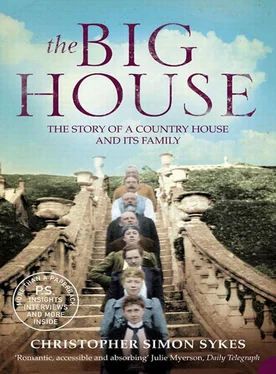
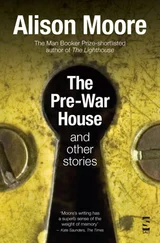

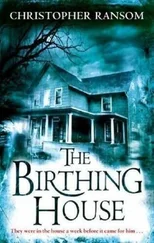



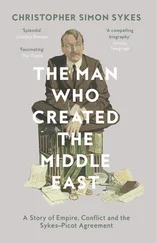

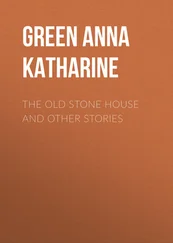


![Edward Ellis - Adrift on the Pacific - A Boys [sic] Story of the Sea and its Perils](/books/753342/edward-ellis-adrift-on-the-pacific-a-boys-sic-s-thumb.webp)